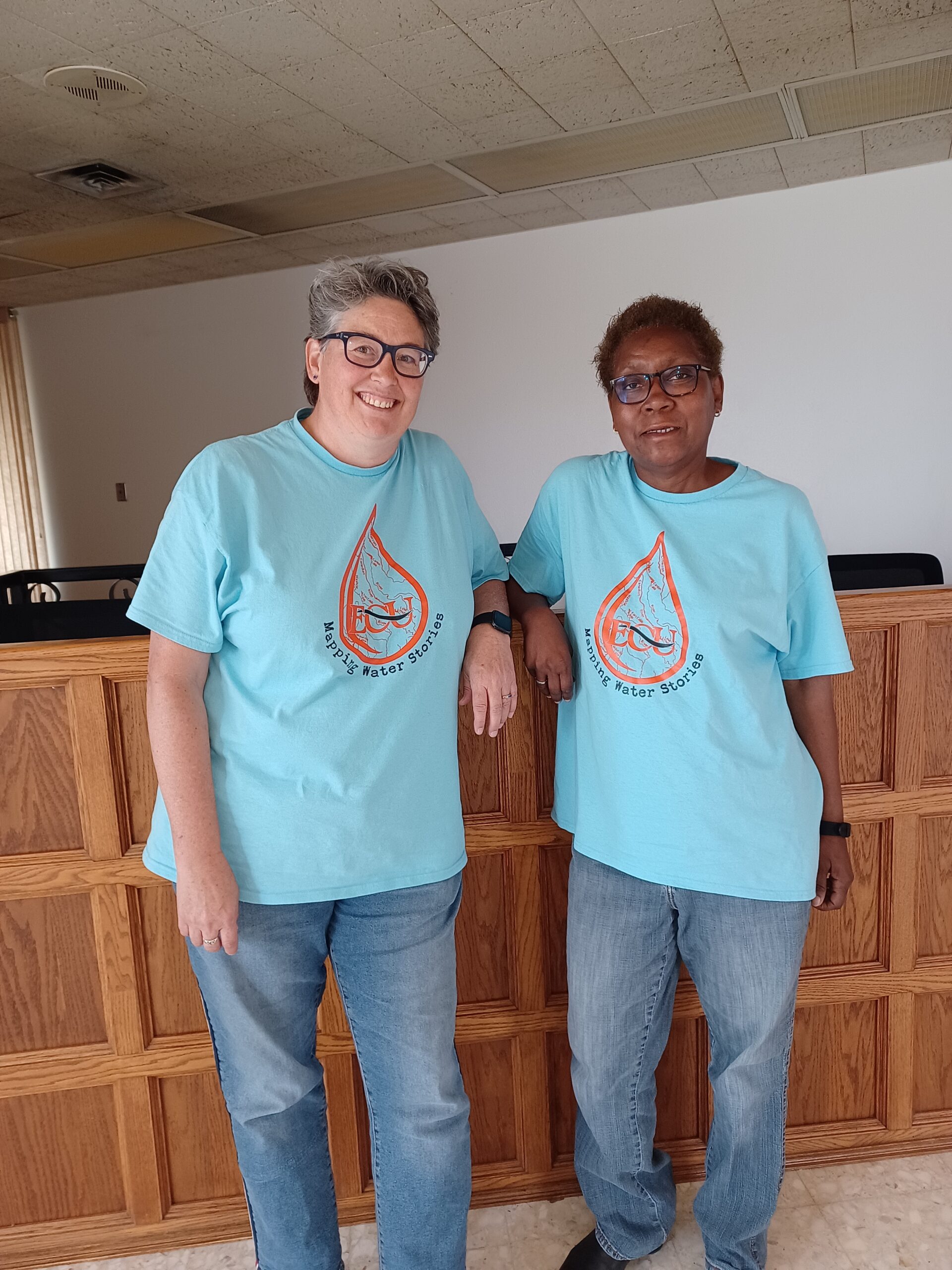
The Water Science Academy: A Thirst for Hands-On Science
June 28, 2023 by Jessika Leatherbury
 By: Sunnie Dawn Baker
By: Sunnie Dawn Baker
Few issues are more important to the survival of the human race than water sustainability. Water is essential for life and new water technologies and research can only help us in the future. East Central University in Ada is working to address this need head on. The University is home to the Oka’ Water Institute, but it also offers a Master’s Degree in Water Resource Policy Management. However, after the 2022 Oka’ Institute’s Sustainability Conference, Dr. Christine Pappas, Director of the Water Resource Policy Management program at ECU, was approached by Mike Anderson, Superintendent of Ada City Schools. Through this encounter, she discovered that there is a real need and interest in the community for hands-on water education at the younger levels. This took Pappas down a road that led to more engagement with the youth with regards to water science and eventually culminated in the Water Science Academy.
Anderson had told Pappas that, while Ada City Schools has the “A is for Airplane” program, encouraging aviation education to all grade levels, he would like to also have a “W is for Water” program to bring that interest and knowledge to the students as well. In conjunction with administration and teachers, Pappas started developing a curriculum which she piloted at multiple grade levels. She worked with Maria Ruiz Blanco’s third grade class but also spent some time in the high school AP Environmental Science class—two very different approaches for different age groups, but both thoroughly enjoyed the experience and Pappas learned lessons from it as well—what works, what doesn’t work, and, most importantly, that there was a very real thirst for knowledge and activities when it come to water research and technology.
With this realization, Pappas and Dr. Shirley Mixon, Director of the General Studies program at ECU, decided to apply for a grant through the Oklahoma Regents for Higher Education for a summer water science academy. They were awarded $35,000 from the Regents and then another $5,000 from the Oka’ Institute to host their program at ECU. Dr. Holly Jones, an archeologist with expertise in mapping, was appointed director and Mixon was assistant director. Pappas was brought on as staff to help teach and organize curriculum.
The Academy lasted five days and was open to students in grades 8-12 all throughout Oklahoma. Fifty students across the state applied, though they could only take thirty-five. One of the amazing things about this Academy is that it was completely free to all who attended. They stayed in the dorms at ECU, and all food and supplies were taken care of. Because of this, the Water Science Academy had a very diverse group of students. Some of the students were traditionally high-performing, while others didn’t even have college on their radar. Some came from private schools, while others were in foster care. Some didn’t even have the blankets for their beds, which, of course, Pappas and Mixon took care of for them. All of the students, however, came away with a sense of pride in their accomplishments as they presented at the final awards ceremony.
The Water Science Academy had three main components: First American storytelling, water testing, and Geographic Information Systems (commonly referred to as “GIS”), which is a system used for mapping geographic data. It was important to the organizers of this academy to have the Native storytelling elements involved because of the cultural importance of water and indigenous wisdom. The Chickasaw Press donated copies of Oka Holisso, which is a Chickasaw and Choctaw Water Resource Planning Guide. They also had Donna Courtney, the Storytelling Program Manager for the Chickasaw Nation come tell water stories to the students. As the week progressed, the students built their own narratives around water showing how science and storytelling can come together.
The students also were also exposed to Blue Thumb Water Training. Blue Thumb is a program through the Oklahoma Conservation Commission to teach people how to do water testing and expand the amount of water data collected throughout the state. After learning about water testing, the students collected samples from Wintersmith Lake, Byrd’s Mill Spring, and Little Niagara at the Chickasaw Nation Recreation Area in Sulphur. The students tested the water samples for phosphate, wide range pH, chlorine, dissolved oxygen, and nitrates. In addition to water testing, the students also learned about water usage and conservation. Many were shocked to learn how much water they use on a daily basis and some came away determined to change their habits in order to conserve water.
The curriculum covering Geographic Information Systems introduces mapping as an integral part of scientific research. Dr. Jones introduced the students to Google Earth Pro and taught them how to drop and format points on a map as a means of mapping data. The students used their own findings, inputting the values of the five variables they had tested for in the water at the three different locations.
These students came away from the Water Science Academy with a new wealth of knowledge as well as a passion for water science and many are now considering ECU for college. Pappas and Mixon also learned a lot, though, and can use their newfound knowledge to help with water curriculum in the future. She shared that this work could not be done alone, , though. Pappas added her appreciation and thanks to many community partners including Coca-Cola, Jimmy John’s, and the Chickasaw Press, and notes in particular that they couldn’t have done it without the support from the Oka’ Institute and East Central University.
Water is a passion for Pappas and Mixon and they want to teach the future generations about the importance of research and conservation. Pappas says, “Water sustainability is a limiting factor of life and economic development. Without water management we would not be here so it is important to teach kids about the sustainable use of water as well as water quality. By visiting Byrd’s Mill Spring, we showed the students how pure and clean Ada’s water is. But, we have to manage that wisely.”
Sign up to receive more news from the Ada Jobs Foundation HERE!
Written by
Jessika Leatherbury
You may also interested in:
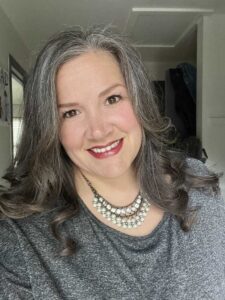
Adapt and Overcome: Allison Poe’s Recipe for Resilience and Growth
By: Sunnie Dawn Baker Allison Poe has always followed her feet. She waits for the signs to appear and, once she recognizes them, she travels that path, and has never
Jeff Warren: A Life in Sound, Vision, and Storytelling
By: Sunnie Dawn Baker When Jeff Warren got involved in the Houston music scene as a teenager, he had no clue where his path would lead. Now, nearly thirty years
From Pitch to Progress: ECU's Glass Recycling Program Turns Waste into Opportunity
By: Sunnie Dawn Baker In 2018, Dr. Christine Pappas competed in Ada Jobs Foundation’s Big Pitch Competition by promoting grinding glass bottles into sand. She won the Big Pitch that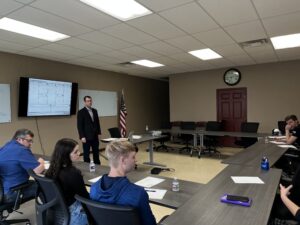
The Importance of Customer Discovery: Know Your Audience and Know Your Market
By: Sunnie Dawn Baker Entrepreneurs and small business owners must consider many factors to achieve success, with their target market being one of the most crucial. Sometimes, when people are
What Does Economic Development Do for You? The Significance of the Economic Multiplier
By: Sunnie Dawn Baker People often find the term “economic development” vague and confusing. Understanding how economic development works and benefits the community can be challenging. Though there are many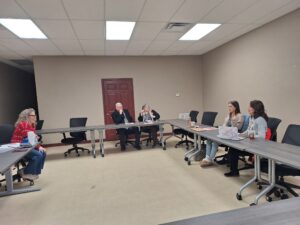
Helping Entrepreneurs One Workshop at a Time: Lauri Rowe and QuickBooks for Small Businesses
Entrepreneurs tend to be filled with passion and big ideas. They have found a solution to a problem they see in the world, and they barrel ahead, excited for their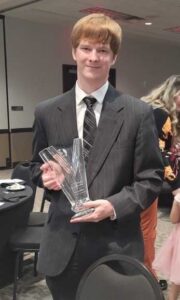
Hunter Cook: Technology, Entrepreneurship, and the Written Word
By: Sunnie Dawn Baker Hunter Cook started writing when he was seven years old. At first, he wanted to write comic books, but then he realized he couldn’t draw. He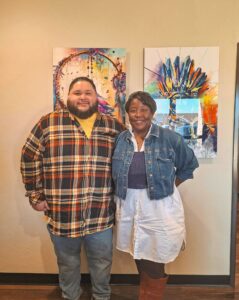
Empowering Native Artists: FAME App Brings Innovation to First American E-Commerce
By: Sunnie Dawn Baker Entrepreneurs are problem solvers. They are constantly striving for solutions to issues they see in the world or in their own lives. In the case of
Learn, Connect, and Grow: 2025 Workshops for Aspiring and Current Business Owners
By: Sunnie Dawn Baker A new year brings new possibilities, and, at the Ada Jobs Foundation, it also brings a new round of programming and workshops. As the local Economic